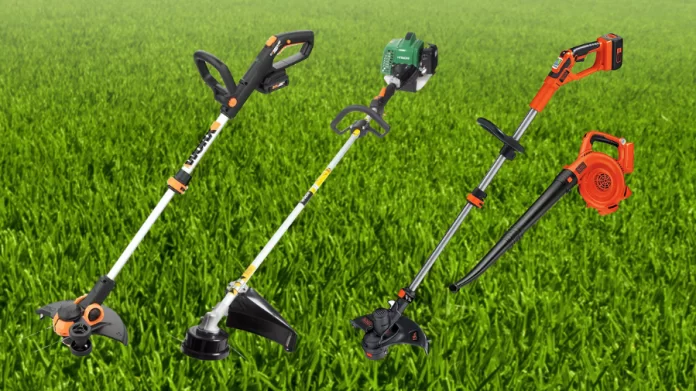A string trimmer is an essential gardening tool that helps keep your lawn neat and tidy by trimming grass and weeds in hard-to-reach areas. Like any power tool, string trimmers wear down over time and eventually need to be replaced. But how do you know when to replace your old string trimmer? In this article, we’ll explore the signs that indicate it’s time for a new one and help you make the right decision for your gardening needs.
Signs It’s Time to Replace Your Old String Trimmer
Knowing when to replace your old string trimmer can save you time, frustration, and money in the long run. Here are some clear signs to look out for:
1. Decreased Performance and Efficiency
If your string trimmer struggles to cut through grass or requires multiple passes over the same spot, it may be a sign of worn-out components or an underpowered motor. Over time, engines weaken, and trimmer lines become less effective, which impacts overall performance.
2. Frequent Repairs and High Maintenance Costs
If you find yourself constantly fixing the string trimmer, replacing parts, or paying for professional repairs, it might be more cost-effective to invest in a new model. Repair bills can quickly add up, sometimes surpassing the price of a new trimmer.
3. Excessive Noise or Vibration
Unusual noises or vibrations during operation can indicate internal damage or misalignment. These issues not only reduce efficiency but also make the trimmer uncomfortable and unsafe to use.
4. Outdated Technology and Safety Features
Modern string trimmers often come with improved safety features, ergonomic designs, and environmentally friendly engines. If your old trimmer lacks these benefits, it might be time for an upgrade.
Benefits of Replacing Your Old String Trimmer
Understanding when to replace your old string trimmer can lead to several advantages:
- Improved Cutting Performance: Newer models offer better cutting power and more durable lines, making yard work faster and easier.
- Enhanced Safety: Updated safety features help prevent accidents and injuries.
- Reduced Environmental Impact: New trimmers often have cleaner engines that comply with environmental regulations.
- Comfort and Convenience: Ergonomic designs reduce user fatigue, allowing you to work longer without discomfort.
How to Choose the Right Replacement
When you decide it’s time to replace your old string trimmer, consider the following factors:
- Power Source: Gas, electric, or battery-operated models each have their pros and cons.
- Cutting Width: Choose a trimmer with an appropriate cutting swath for your yard size.
- Weight and Ergonomics: Lightweight and balanced models reduce strain during use.
- Durability and Warranty: Look for brands with strong warranties and reputations for reliability.
Conclusion
Knowing when to replace your old string trimmer is key to maintaining an efficient and enjoyable yard care routine. Keep an eye on performance issues, repair costs, and safety concerns to determine the right time to upgrade. By investing in a new string trimmer, you can enjoy a cleaner lawn with less effort and more peace of mind.

